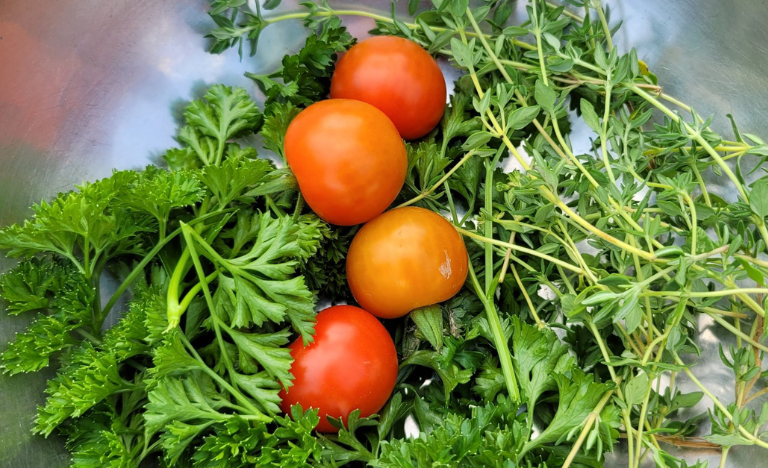Under the beating August sun, Cooking for Life chef instructor Sonya Gammal and two program participants lean over the rooftop garden herb bed with their shears, ready to harvest.
The tiny basil plants an earlier group of youth planted in May had tripled in size and developed large, fragrant leaves. Gammal shows a youth in the job readiness program how to trim the stems and fill the metal bowl they’d brought with bunches they’ll use downstairs in the kitchen for pesto.
“Trim lots, we can always freeze our pesto to use in winter,” Gammal says. Then she wanders over to the vegetable patch to take a look.
“See? There are tiny little brussels sprouts starting,” she says excitedly. In a few weeks, those will be ready to harvest too.
The rooftop garden is a hidden Covenant House gem and an important source of food and food education not just for Cooking for Life participants but also for those in other programs that help equip youth with life skills - including cooking for themselves - as they prepare to live independently.
Lovingly cared for by our team, youth and volunteers, the garden is bursting with all types of herbs and vegetables, that will become part of recipes now and in the future, in the form of dried seasonings and preserved vegetables.
“This garden brings so much joy to the Cooking for Life team,” Gammal says. “It also introduces youth who have never had the opportunity to grow herbs, tomatoes or any of these vegetables to gardening.” “Some youth never realized basil was a fresh herb that grew in the ground”, Gammal says. “Their only exposure was to the dried variety”.
“There are garden patches set aside for specific programs, but everyone shares,” says Covenant House kitchen manager Maria Canay. Her staff also have a plot to help complement the 2,500 meals a week they prepare for youth living in shelter. It has been a bumper crop for tomatoes this year, the plants towering well over her head, having developed far more fruit than the plants they typically grow each year.
Last week, Maria harvested a bucket of ripe tomatoes. She also collected a bag full of sage, rosemary, thyme and parsley.
“We’ll use some of this parsley and rosemary for a tilapia dish we often make that youth enjoy,” she says.
The produce grown on the Covenant House rooftop is hardly enough to meet the needs of the kitchen downstairs, Maria says, but the juicy tomatoes are great additions to salads and trays of crudites.
“The youth really enjoy biting into a tomato from the rooftop garden,” she says. “They can tell it’s fresh.”
It’s also so important for youth experiencing homelessness to have access to fresh food.
Sonya finds the rooftop garden helps Cooking for Life youth build a strong connection to the process of growing something and ultimately using it in their dishes.

